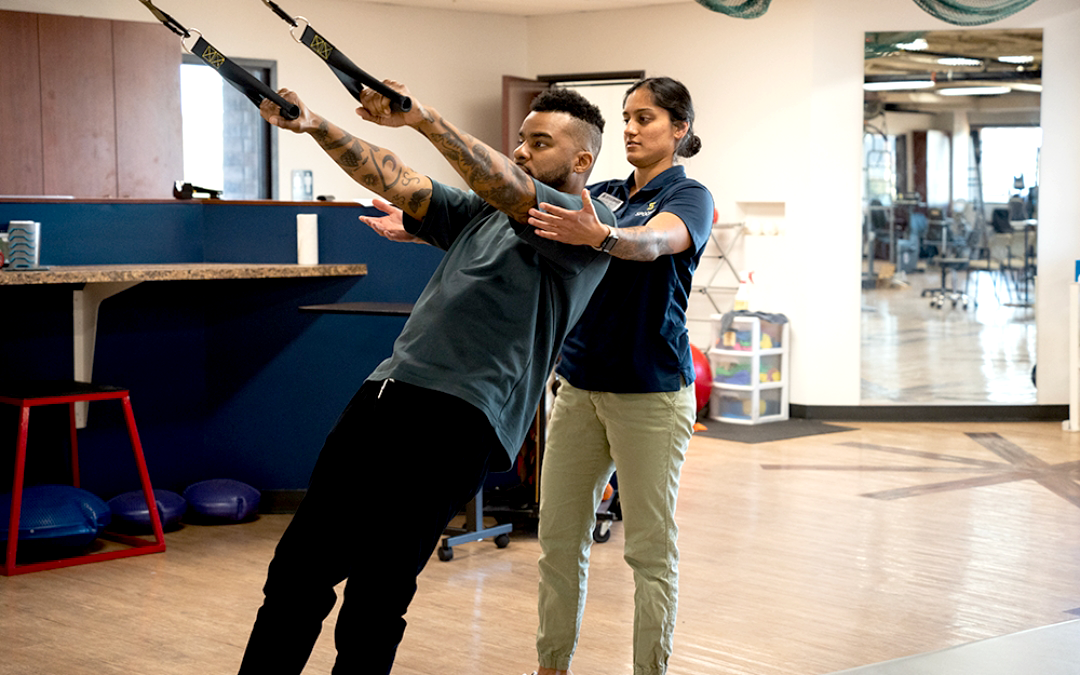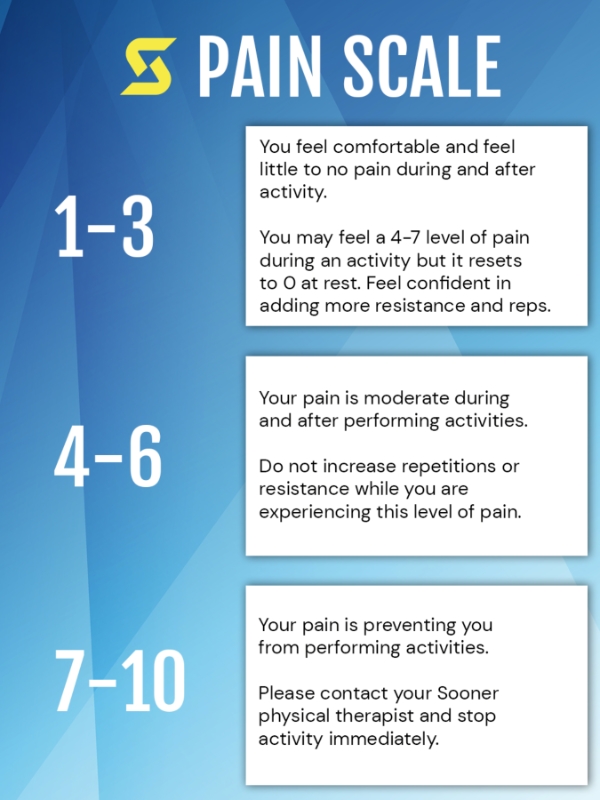By: Cassidy Hammons, PT, DPT, Ankita Kelkar, PT, DPT, Juan Renoj Juanta, PTA
An injury can be frustrating while you are trying to achieve your training goals. It’s important to meet your body where it’s at, and you can still exercise while reducing the intensity of your workout.
To learn more about exercising while injured, read “HIIT Classes and Overuse Injuries.”
What happens if you have to stop working out?
First, seek out the expertise of a physical therapist if you are struggling with an injury. Spooner therapists are on your team to help you understand your injury and get you back to activity stronger than before.
With the help of a Spooner therapist, you can work to recover to progressively get back to training. Recovery can look different for everyone depending on their injury, lifestyle, and goals.
3 Tips to Return to Training
Keep these tips in mind going back to the gym after injury:
1. Grade Your Exercise:
This doesn’t mean to actually give yourself a test score on your workouts, but it means to phase your workouts to reintroduce your body back to training. Start with smaller weights than you normally lift and reduce your repetitions and time of exercise. Only move up in weight, repetition, and time when your pain is at or less than a 4 on a scale of 10.
Having a physical therapist on your team to “dose” your graded exercise. They can help to decipher whether or not pain is able to be worked through or if you should take a step back in your training.
2. Focus on Technique:
Your technique is crucial to your training success and avoiding re-injury. Improper technique can lead to another overuse injury.
Physical therapists are movement experts who can provide you with a movement analysis to help you achieve proper lifting technique!
3. Improve Muscle Stability:
Any instability or imbalance in your muscles can lead to re-injury if not addressed properly. You want to make sure you aren’t over- or under-loading one side of your body, which can possibly lead to another overuse injury.
Seeking out the help of a physical therapist to address, improve, and strengthen your weaker muscles can help you with any high intensity, explosive, or plyometric movements that you will be performing when training at 100%.
Get Back to Training
Keep these tips in mind to help you get back to training! If you have experienced an injury that has taken you away from the gym, or if you are currently working out through pain, don’t hesitate to have a movement assessment from a Spooner therapist. We can help you work through exercises that you are doing during your training sessions and identify if there are any areas of weakness or tightness to address to help you perform your best.
Physical therapists specialize on maximizing your body’s functional capabilities! Schedule an appointment with a Spooner therapist today so we can help you achieve your goals.


